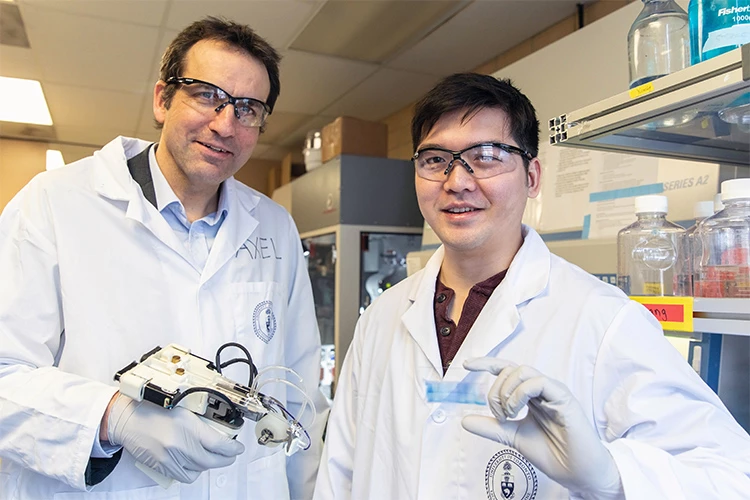In search of new ways to treat severe burns that don’t involve skin grafts, scientists at the University of Toronto have spent more than a decade developing a portable device that can print out large sheets of "bio ink" to boost the healing process. The team has put its latest model through trials, where it proved capable of accelerating the regeneration of healthy skin in pigs for the first time.
The device was developed at the University of Toronto’s Faculty of Applied Science and Engineering, where scientists hope to create an alternative therapy to skin grafts often used to treat severe burns. These procedures involve removing skin from an unaffected part of the body and transplanting it to the wound, but their use is limited when it comes to treating full-body burns that have penetrated most layers of the skin.
“With big burns, you don’t have sufficient healthy skin available, which could lead to patient deaths,” says study author Marc Jeschke.
The research team unveiled a handheld prototype in 2018 that was a step up from the microwave-oven-sized device it showed off in 2014. The device has undergone 10 redesigns since we last saw it, and now resembles something close to what the researchers imagine surgeons using in an operating theater.
It works by printing out sheets of biomaterial that contain mesenchymal stroma cells, stem cells which can differentiate into special types of cells but in this case play the role of promoting skin regeneration and minimizing scarring. Previously the team demonstrated an ability to cover a wound with “new skin” in two minutes or less.
Now the team is building on those results by observing how the printed skin can enhance healing. Its latest experiments were conducted on pig skin with full-thickness burns, where the innermost and outermost layers of skin were affected, with the biomaterial sheets layered directly onto the wound bed. There, the sheets were seen to promote repopulation of dermal cells and the formation of new blood vessels.

“Previously, we proved that we could deposit cells onto a burn, but there wasn’t any proof that there were any wound-healing benefits – now we’ve demonstrated that,” says Axel Guenther, study co-author.
From here, the team will work to improve the technology to further limit scarring with the belief that the handheld skin printer could enter clinical use within the next five years.
“Once it’s used in an operating room, I think this printer will be a game changer in saving lives,” says Jeschke. “With a device like this, it could change the entirety of how we practice burn and trauma care.”
The research was published in the journal Biofabrication.
Source: University of Toronto




